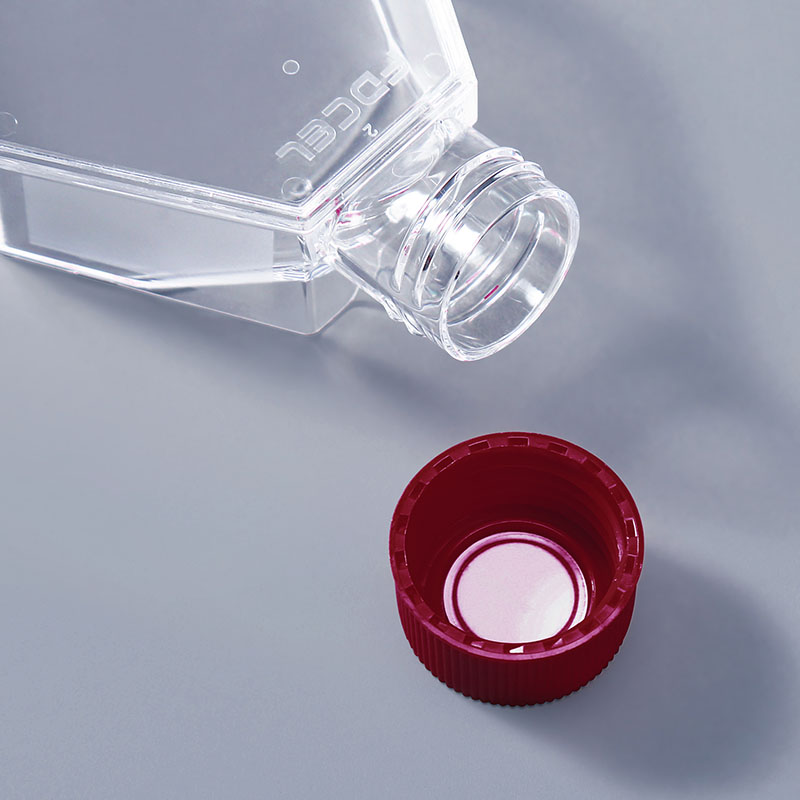In the field of cell culture, the design and material selection of cell culture flasks are crucial for cell growth and experimental results. Among them, bottles with slant-neck design have many advantages in the adherent culture of cells, which are described in detail below.
1. Reduction of air bubbles and dead space:
Cell culture bottles with slanted neck design can effectively reduce the generation and accumulation of air bubbles during the culture process. As the slant neck design makes the distance between the bottle neck and the liquid surface increase, air bubbles are more likely to escape from the culture liquid, reducing the interference of air bubbles on cell growth. At the same time, the slant neck design also ensures that there is no dead space between the pipette and the culture surface, which avoids the cells from being affected by the dead space area during the culture process and ensures the homogeneity and consistency of the culture.

2. Convenient for liquid handling and sample collection:
The slanted neck design also offers advantages in liquid handling and sample collection. The wide neck and moderate angle with the culture surface make it easier for pipettes and other experimental tools to enter the bottle for liquid manipulation, which makes the operation process more convenient and precise. At the same time, the slanting neck design also facilitates the collection of samples or cell sampling from the bottle, which is conducive to the subsequent experimental analysis.
3. Enhance the stability of cell growth environment:
Since the slant neck design can reduce the interference of air bubbles and ensure the full contact between the culture solution and cells, it can enhance the stability of the cell growth environment. Stable culture environment is important for cell growth, proliferation and accuracy of experimental results, and cell culture flasks with slanted neck design can provide good support in this regard.
The slant neck design of cell culture flasks has many advantages such as reducing air bubbles and dead space, facilitating liquid handling and sample collection, and enhancing the stability of the cell growth environment, which can improve the efficiency of experiments and the reliability of results, and help promote the development of cell biology and biomedical research.
The FAI climbed 5.9 percent year-on-year in the first 11 months of 2018, quickening from the 5.7-percent growth in Jan-Oct, the National Bureau of Statistics (NBS) said Friday in an online statement.
The key indicator of investment, dubbed a major growth driver, hit the bottom in August and has since started to rebound steadily.
In the face of emerging economic challenges home and abroad, China has stepped up efforts to stabilize investment, in particular rolling out measures to motivate private investors and channel funds into infrastructure.
Friday's data showed private investment, accounting for more than 60 percent of the total FAI, expanded by a brisk 8.7 percent.
NBS spokesperson Mao Shengyong said funds into weak economic links registered rapid increases as investment in environmental protection and agriculture jumped 42 percent and 12.5 percent respectively, much faster than the average.
In breakdown, investment in high-tech and equipment manufacturing remained vigorous with 16.1-percent and 11.6-percent increases respectively in the first 11 months. Infrastructure investment gained 3.7 percent, staying flat. Investment in property development rose 9.7 percent, also unchanged.
 English
English


















































